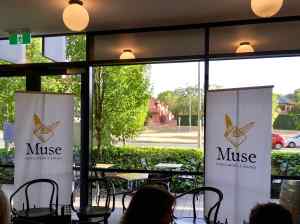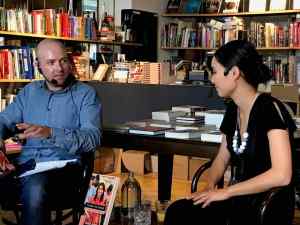A decade ago, I wrote a Monday Musings post on Asian-Australian literature, in which I named, as I often do in such posts, 5 Asian Australian writers. Given the increasing problems of discrimination faced by Asian communities in western countries alongside, perhaps paradoxically, the increased visibility of Asian Australian writing here, I thought an update might be in order.
Peril
I didn’t know when I wrote my last post about the online magazine Peril which had been in existence since 2006! If I had known, I’d have referenced it. Peril focuse, says its About page, on “issues of Asian Australian arts and culture”. It is free, and is supported by donations from its readers, plus the Australia Council for the Arts, Creative Victoria and other organisations.
Do read its About page for a full description of them, but, essentially, they want
to showcase new literature through diverse forms, including poetry, drama, translations, creative writing, memoir, essays, biographical profiles, interviews and other story structures. We are also interested in writing about the visual arts, theatre and film and other cultural arts practices.
In the sidebar on its Home Page, you will find a list of its editions, from Edition 1 Nerds to Edition 44 Feminist Journeys.
Nerds is introduced in an editorial by Peril‘s founding editor, Hoa Pham (whose Lady of the realm, I’ve reviewed). It is a small edition with pieces by Hoa Pham, S.K. Kelen and Tom Cho, among others. Hoa Pham explains the origin of the name, Peril, as coming from the “so called Yellow Peril that labelled the wave of Chinese immigration in the 19th century. We are perilious (sic) and take risks but not in the way that the Pauline Hansons of the world think!” Well said!
In its now 15 years, it has published 44 issues, which is a great achievement. Contributors have included – and here I’m naming some of the writers I know, so it’s highly selective and not, necessarily, the most prolific contributors: Ouyang Yu, Alice Pung, Benjamin Law, Jessica Tu, Merlinda Bobis, Roanna Gonslaves, Eileen Chong, Shastra Deo, Melanie Cheng.
Edition 22 particularly captured my attention. Titled Black on Rice, it’s
A collaborative co-edition with the State Library of Queensland, Indigenous publishing initiative, black&write!. Together with co-editor, Ellen van Neerven, we consider six Indigenous and six Asian Australian writers whose work we love, whose work we like to see side by side, writers whose take on the relationships (or otherwise) between migrant and Indigenous Australia we would like to hear.
The writers included several Indigenous Australian writers you’ve met on my blog, like Ellen van Neerven, Marie Munkara and Jeanine Leane, in addition to Asian Australian writers like Ouyang Yu, Eleanor Jackson and Michelle Law. Even though, historically of course, their situations are radically different, the “othering” that both groups face binds them. I am often moved on shows like The Drum by the empathy Indigenous and immigrant Australians (of colour) regularly show each other.
There is, naturally, a strong political underpinning to the writing, as edition titles make very clear, like Why are people so unkind (8), We’re queer here (28 & 29), You don’t sound Asian (32), History Repeats (36). Peril is a rich source of contemporary writing, on tap whenever you want it – but do consider donating, if you read it!
Asian Australian writers, update
Now, I’m going to add 5 more writers to the 5 I listed in my first post, but I’m not limiting this list, as I did then, to writers only born elsewhere. Most of these writers have written and published more than the books I mention below – short stories, poetry, etc – and are actively involved in promoting diverse writers and writing.
Merlinda Bobis
Born in the Philippines, Bobis has written four novels, including Fish-hair woman (my review). Her most recent novel, Locust girl: A lovesong, won the 2016 Christina Stead Prize for Fiction in the NSW Premier’s Literary Awards. She is also a visual and performance artist, and has won multiple awards across all her artistic endeavours. She is committed to Asian (indeed migrant) Australians being recognised for their “real” value and contribution rather than being exoticised as other.
Julie Koh
Born in Sydney to Chinese-Australian parents, Koh has had two short story collections published, Capital misfits and Portable curiosities, the latter of which was shortlisted for several awards and won her a Sydney Morning Herald Best Young Australian Novelist award in 2017. A review at The Guardian reports that ‘Koh says her stories are essentially about “the entrapment of the individual in social structures”’.
Hoa Pham
Born in Hobart to Vietnamese parents, Hoa Pham’s first novel, Quicksilver, was published in 1998. She has since had four novels published. Her second novel, Vixen, won a 2001 Sydney Morning Herald’s Young Writer of the Year award. As mentioned above, she was the founding editor of Peril, and I have reviewed her latest novel. She is passionate about about achieving equality for the Asian Australian community, and the role of literature/culture in supporting this.
Mirandi Riwoe
Born in Brisbane, with a Chinese-Indonesian father, Riwoe’s The fish girl (my review) won Seizure’s Viva la Novella V, and was shortlisted for the Stella Prize and the Queensland Literary Award’s UQ Fiction Prize. Her latest novel Stone Sky Gold Mountain won the 2020 Queensland Literary Award for Fiction, the inaugural ARA Historical Novel Prize, and has been longlisted for this year’s Stella. Both these works confront Asian people’s experience under colonialism.
Elizabeth Tan
Born in Perth to Singaporean parents, Tan’s debut novel, Rubik (on my TBR and reviewed by Bill) was well received. Her follow-up collection of short stories, the wonderfully named Smart ovens for lonely people (also on my TBR and reviewed by Bill) won the 2020 Readings Prize for New Australian Fiction and is longlisted for this year’s Stella. She writes about a range of contemporary ills, including climate change, capitalism’s failures, and racism.
Finally
In Peril Edition 41 AA17 (March 2020), Hoa Pham wrote “We’re a movement not a moment”. She looks how the Australian literary landscape had changed in the fourteen years since she founded Peril, and asks whether it was still needed. You will surely not be surprised to find that she concludes yes. (Do read her argument if you’re interested.)
And now, a word from Mirandi Riwoe:
I admire those authors who bring us stories and perspectives that reveal unfamiliar worlds. I’m talking of diverse writers, who favour a perspective that is not mainstream. I love books that are beautifully written but are also saying something.
Is saying something an important part of your reading choices?






